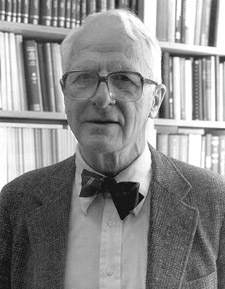Listen to Birkhofff expressing his criticism of Prandtl and modern fluid mechanics.
The mathematician Garrett Birkhoff addresses in the opening chapter of his book Hydrodynamics from 1950 several paradoxes of fluid mechanics including d’Alembert’s paradox, and expresses a clear doubt in their official resolution attributed to Prandtl:
- I think that to attribute them all to the neglect of viscosity is an unwarranted oversimplification The root lies deeper, in lack of precisely that deductive rigor whose importance is so commonly minimized by physicists and engineers….
- …though Dirichlet flows (potential solutions) and other steady flows are mathematically possible, there is no reason to suppose that any steady flow is stable…
In our work we have shown that Birkhoff was right: Drag in slightly viscous flow is mostly pressure drag which results from instability of potential flow at separation developing into a 3d rotational separation pattern without the pressure rise of potential flow giving zero drag. Pressure drag is thus not an effect of any viscous boundary layer as claimed by Prandtl.
Birkhoff questioned the very Father of Modern Fluid Mechanics and the fluid mechanics community had to react: J. J. Stoker Director of Courant Institute of Mathematics took on the rule to eliminate Birkhoff (at Harvard) by a negative review of Birkhoff’s book:
- The reviewer found it difficult to understand for what class of readers the first chapter was written.
- For readers who are acquainted with hydrodynamics the majority of the cases cited as paradoxes belong either in the category of mistakes long since rectified, or in the category of discrepancies between theory and experiment the reasons for which are also well understood.
- On the other hand, the uninitiated would be very likely to get wrong ideas about some of the important and useful achievements in hydrodynamics from reading this chapter.
Stoker reached his goal: Birkhoff revised his criticism in a second edition of the book and gave up fluid mechanics. The Father was saved and order restored.
Stoker continued his review with a tribute to the Kutta-Zhukovsky circulation theory, also ultimately based on effects of viscosity:
- In the case of air foil theory, for example, the author treats only the negative aspects of the theory. It has always seemed to the reviewer that the Kutta-Joukowsky theory of airfoils is one of the most beauti- ful and striking accomplishments in applied mathematics. The fact that the introduction of a sharp trailing edge makes possible a physical argument, based on consideration of the effect of viscosity, that eads to a purely mathematical assumption regarding the behavior of an analytic function which in its turn makes the solution to the flow problem unique and also at the same time furnishes a value for the lift force, represents a real triumph of mathematical ingenuity. The fact that the theory does not solve all of the problems concerned with airfoils should not be surprising; no physical theory is every final nor without limits within which it is valid. These aspects of the Kutta-Joukowsky theory are not mentioned by the author.
We show in New Theory of Flight under review by AIAA Journal that the Kutta-Zhukovsky circulation theory is incorrect: Lift of a wing is generated by 3d rotational separation at a trailing edge which is not sharp, and not from a singularity of a sharp trailing edge.
The referee’s reports from AIAA J will show if the fluid mechanics community is now open to questioning of Prandtl or if a new Stoker will appear.


Leave a comment